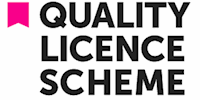Palmistry Diploma Course
Centre of Excellence
Summary
- Certificate of completion - Free
- TOTUM card available but not included in price What's this?
Add to basket or enquire
Overview
Palmistry is the practice of interpreting a person's character or predicting their future by examining the lines and other features of the hand. This online course will teach you everything that you need to know in order to read palms.
There are three forms of palmistry:
Chiromancy involves reading the palm by studying the lines and mounts(bumps)
Chirognomy involves judging character by the shape and appearance of the hand.
Dermatoglyphics is the study of the skin ridges of the hand and of fingerprints.
Most readers begin by reading the person’s dominant hand (the hand they write with or use the most). A variety of factors may be considered including the shape of various lines, flexibility of the palm, characteristics of the fingers, shape and size of the palm and the nails.
The information given during a palm reading can be used to help the person understand themselves better and use that knowledge to help them to make decisions. The lines of the hand can change over time, reflecting the changes we make in our lives.
Palmistry is easy to learn and requires no knowledge of other fields of study, although knowledge of astrology can be helpful as there is a close connection between traditional palmistry and astrological theory. This in-depth online course will teach you everything that you need to know in order to read and translate palms.
Reading Method
A reader usually begins by reading the person's dominant hand. This is often considered to represent the conscious mind, whereas the other hand represents the unconscious. In some traditions, the non-dominant hand is believed to describe hereditary or family traits or past-life conditions.
The dominant hand can indicate future events as well as character traits. It describes your public face, environment, education, experience and what you have actively developed. The non-dominant hand shows your potential and inner self. It describes your private face, your instincts and your latent abilities. Some palm readers only consider the dominant hand in a reading. When something is marked on the non-dominant hand and not on the dominant hand, there will be a tendency that might not come to any result.
The best time to read a hand is when the person is relaxed and not immediately after a full meal, alcohol or exercise, which can make the lines appear more reddened than usual. Similarly, the person should not be too hot or too cold. The hand should be gently contracted, not held out flat but with the muscles relaxed so that the hand is as loose as possible.
Hold the hand loosely in yours and examine its shape, size and colour. Look for general themes and impressions first so that you can place the information you glean into context. You might find it easiest to systematically take notes as you go along, at least in the beginning. A record sheet is supplied in the appendix to this course that you can print out and fill in.
In the past, readers would often study ink prints of palms. Nowadays with such easy access to digital cameras, it is easiest to photograph the palms you wish to study, using the computer to enlarge sections to allow you to take a closer look.
Achievement
CPD
Description
Palmistry Course Syllabus:
A Short History of Palmistry
What is Palmistry?
Reading Method
The Hand
Palm
Hand Types
Basic hand types
Traditional hand types
Quadrangle & Great Triangle
Upper Angle
Middle Angle
Zones
Fingers and Thumb
Size
Short fingers
Spacing
Shapes
Lines on the fingers
Phalanges
Fingerprints
Whorl
Arch
Loop
Combined patterns
Mixed patterns
Wrist
Nails
Mounts
Jupiter mount
Saturn mount
Sun mount
Mercury mount
Mars mount
Moon mount
Venus mount
Lines
Major Lines
Life Line
Head Line
Heart Line
Girdle of Venus
Line of Fortune
Health Line
Fate Line
Minor Lines
Intuition Line
Marriage Lines
Travel Lines
Children Lines
Simian Line
Line of Influence
Worry Line
Teacher’s Square
Rings
Loops
Common Marks
Timing
Reading Record Sheet
Questions and answers
Currently there are no Q&As for this course. Be the first to ask a question.
Certificates
Certificate of completion
Digital certificate - Included
Reviews
Currently there are no reviews for this course. Be the first to leave a review.
Legal information
This course is advertised on reed.co.uk by the Course Provider, whose terms and conditions apply. Purchases are made directly from the Course Provider, and as such, content and materials are supplied by the Course Provider directly. Reed is acting as agent and not reseller in relation to this course. Reed's only responsibility is to facilitate your payment for the course. It is your responsibility to review and agree to the Course Provider's terms and conditions and satisfy yourself as to the suitability of the course you intend to purchase. Reed will not have any responsibility for the content of the course and/or associated materials.


